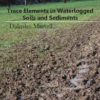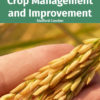In recent times, agronomy has assumed newer dimensions and can be defined as a branch of agricultural science that deals with methods which provide a favorable environment to the crop for higher productivity. It considers the whole range of influences on crop production, including climate and adaptation, soil, water and water availability, crop genetics, the properties of the soil and how the soil interacts with the growing crop; what nutrients the crop needs; the ways that crops grow and develop; and how best to control weeds, insects, fungi, and other crop pests. Non-biological considerations such as economic requirements and consumer and farmer behavior also inform agronomic practices, as do environmental constraints. The emphasis of agronomy is now more towards the scientific study of the behavior of plant under the different environmental conditions like varing soils and climate, irrigation, fertilization etc. by conducting well laid out experiments in the fields, pots & laboratories. It is also involves application of research in the field or forming suitable packages of practices under a given set of conditions. There is a considerable amount of literature showing that an effective agro-ecosystem management, improving nutrient use efficiency, is a crucial challenge for a more sustainable production of horticultural, industrial and cereal crops. As a matter of fact, as agronomic efficiency (i.e., nutrients recovered within the soil-crop system) improves, economic (farm income is maximized from proper use of nutrient inputs) and environmental efficiency (reduced risk of nutrient losses) will benefit.
This volume ‘Agronomy’ collects current research findings dealing with different aspects of the understanding of agronomy focusing on crop production and management, as well as crop science and physiology. It also focuses on crop disease and protection, agroclimatology and soil science plant-soil relationships, crop quality and post-harvest physiology, cropping of sustainable development, farming and cropping systems, agro-ecosystems and the environment demonstrating new methods and technologies. This book shows a wide variety of functions that can be grouped according to their economic dimension, social dimension, and environmental dimension. The book is a valuable addition to the existing knowledge and is especially intended for university students and all professionals in the field of agriculture.













